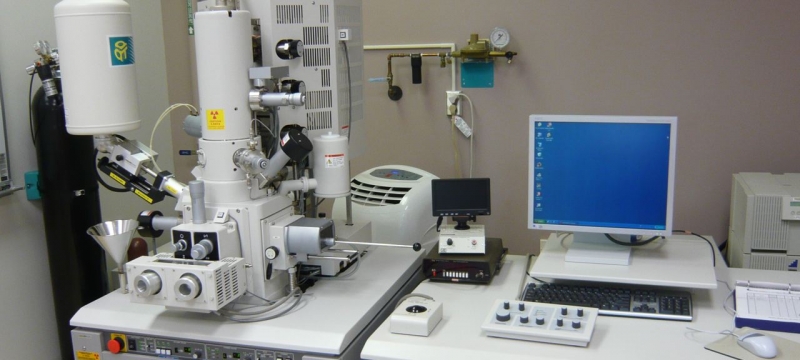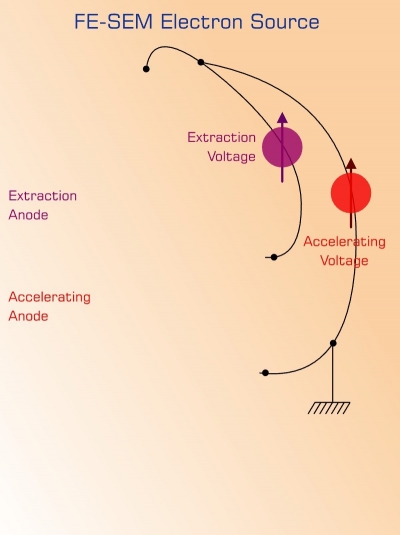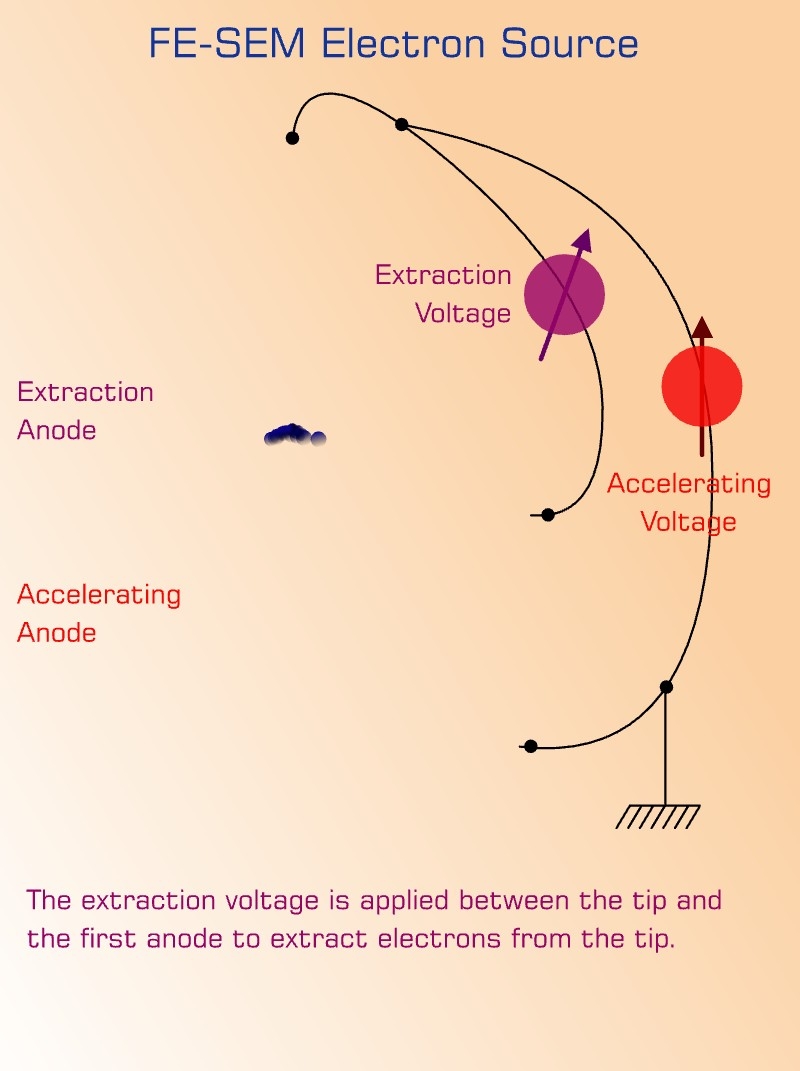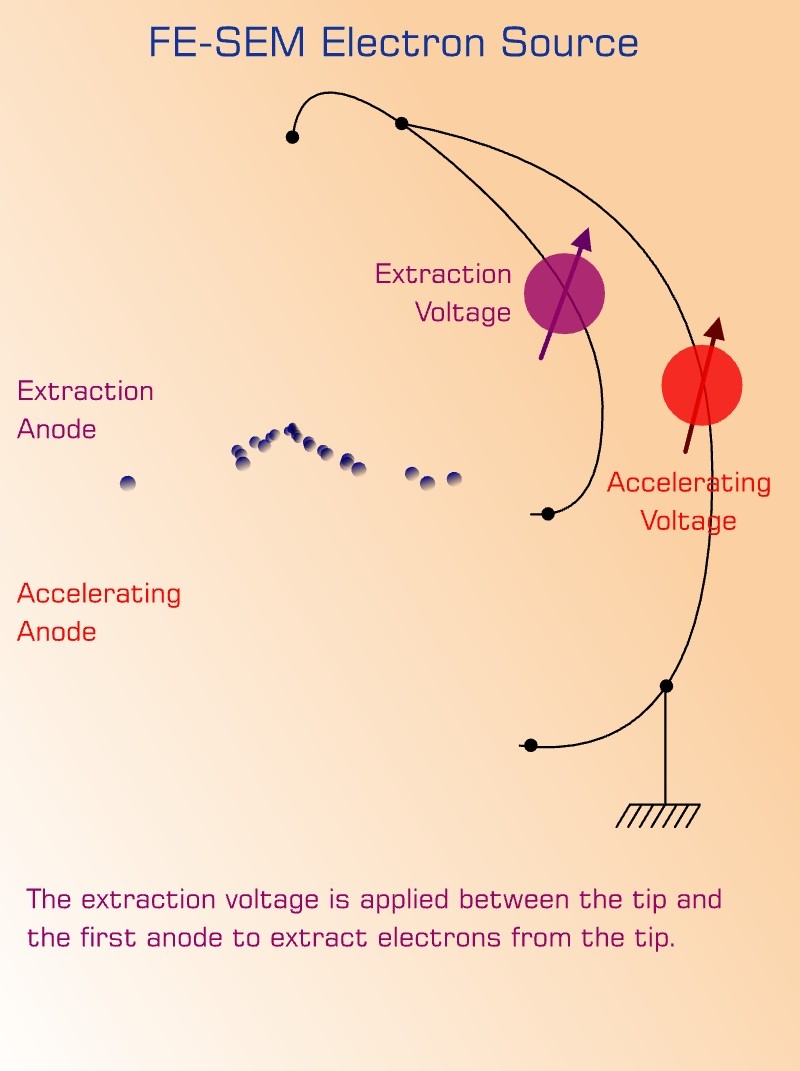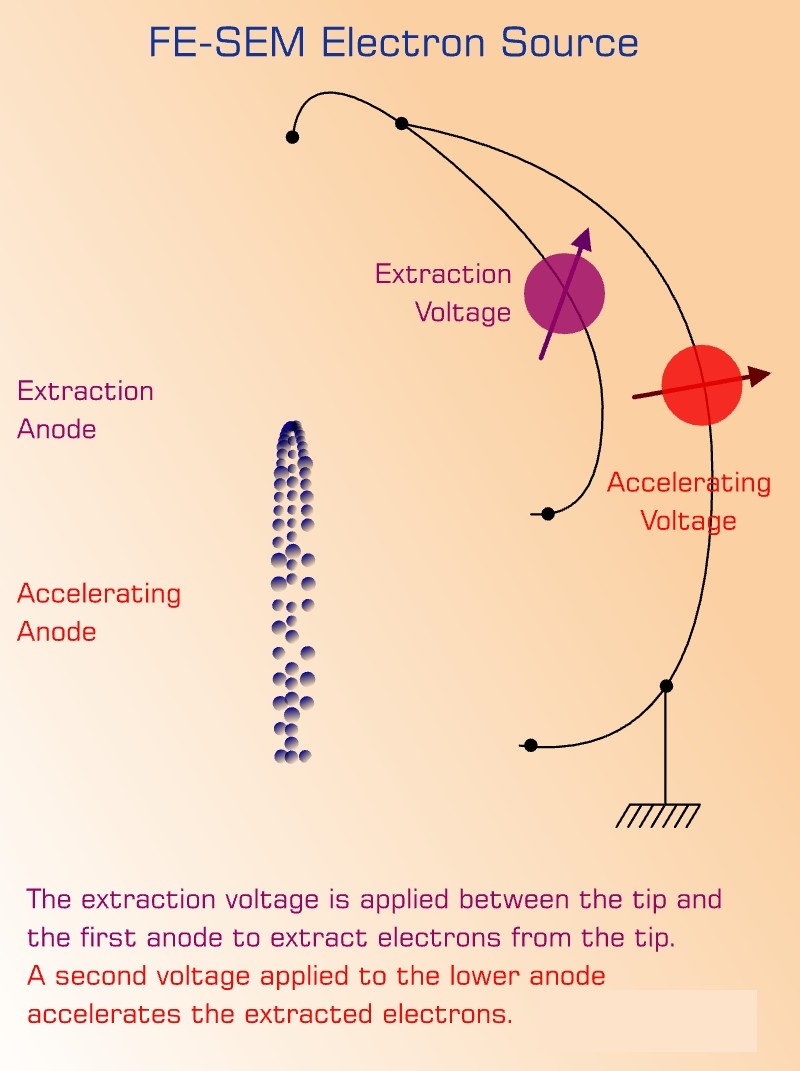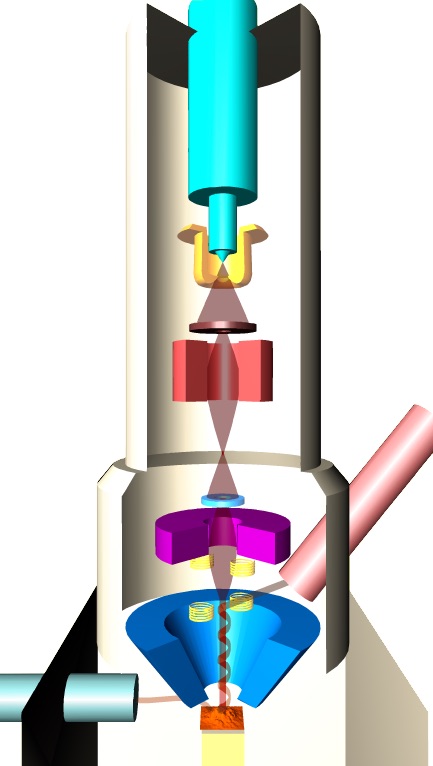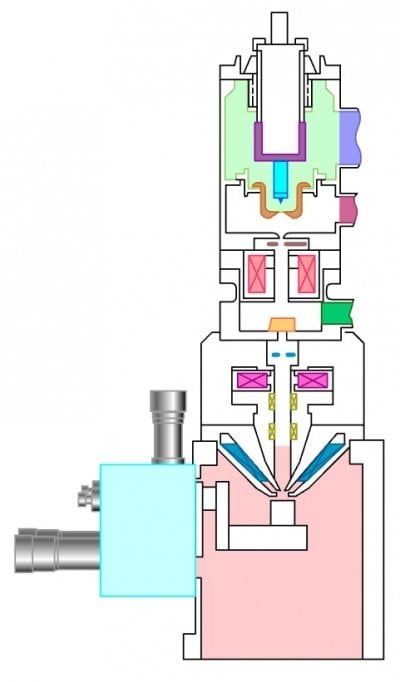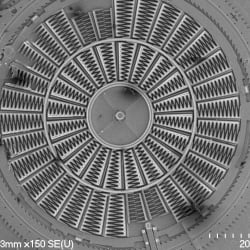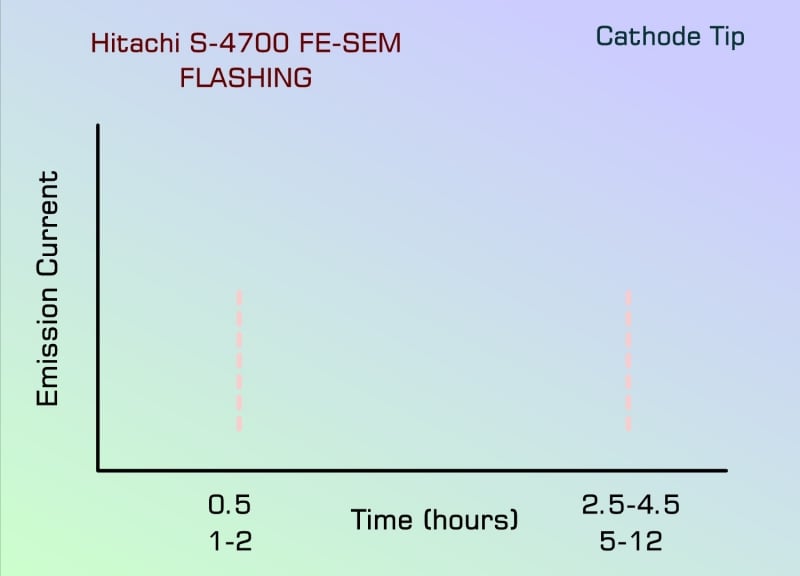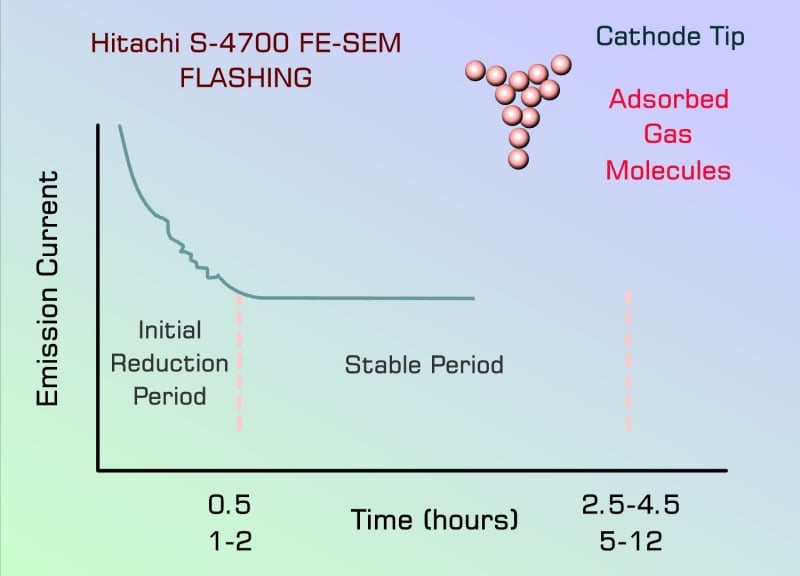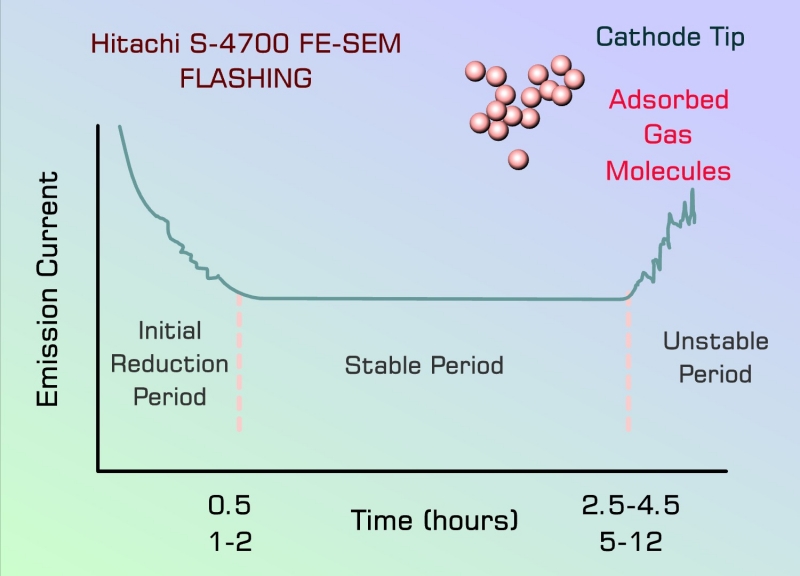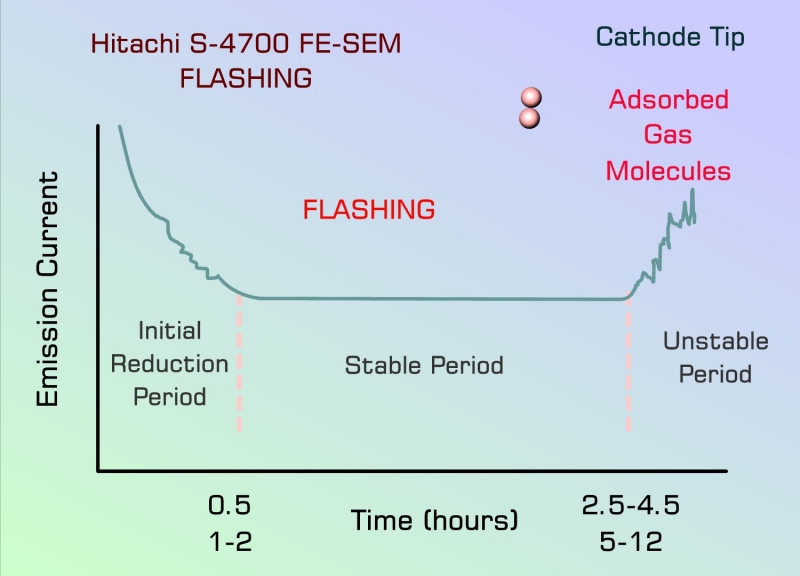Electron Source
Much like the traditional scanning electron microscope (SEM), the field emission scanning electron microscope uses electrons to illuminate a sample, instead of visible light as is used in optical microscopy. Since the wavelength of an electron is much smaller than that of visible light, scanning electron microscopes are capable of imaging at much higher magnification than light microscopes. The field emission SEM (FE-SEM) is capable of reaching a magnification of 500,000 times with a spatial resolution of up to 1.5 nm, making the FE-SEM a good choice for high magnification, high resolution imaging.
In scanning electron microscopy, a thermionic electron source such as a tungsten filament is usually used. The subject of this tutorial, the Hitachi S-4700 FE-SEM, utilizes a cold cathode field emitter composed of a single crystal of tungsten etched to a fine point. In scanning electron microscopy, electrons escape the source once sufficient heat energy has been applied to exceed the energy potential barrier. In cold field emission electron microscopy, however, an electric field is applied to the tip of the electron source essentially "pulling" electrons from the emitter. The electrons are then accelerated off of the source by two anodes. Because of the microscopic size of the electron source, the beam produced by this emitter is one of the smallest available and contributes to the high resolution of the instrument.
FE-SEM Electron Source Animation
FE-SEM Column Tilt Animation
The column is lined with electromagnetic lenses that are used to direct the electrons down the column and, ultimately, onto the surface of a specimen. The group of lenses contained in the column have one main goal: de-magnify the electron beam so that by the time it hits the specimen, the "spot size" (the diameter of the electron beam at the specimen) has decreased from ~50 µm to ~10 µm. That's a de-magnification of about 5,000 times! The FE-SEM is equipped with a special objective or focusing lens that projects the magnetic field below the lens. This simulates an in-lens SEM configuration and dramatically improves resolution. Spatial resolution in the S-4700 FE-SEM is, at best, ~1.5 nm at specified parameters: 1 kV and 1 mm working distance (WD) as well as 20 kV and 12 mm WD.
Imaging
SEM images are formed when the electron beam position on the sample surface is synchronized with the CRT, or cathode ray tube viewing screen. At each location where the electron beam strikes the sample, an electron signal is used to produce contrast in the CRT image. The process of tracing or sweeping the electron beam across the sample surface is called rastering. When the user zooms in using the magnification knob, the electron beam must raster a smaller section of the sample. This results in a smaller area being analyzed, while the size of the CRT remains the same. This is the basic principle of magnification. The S-4700 FE-SEM has no CRT viewing screen and uses a flat screen LCD monitor. The image is created when the scanning electron image, produced as previously described, is "imposed" onto the main software window.
Vacuum
FE-SEMs, as with all electron microscopes, operate in a vacuum environment, which removes air and its contaminants from the electron column. The vacuum environment in an SEM precludes the direct examination of living things, liquids, or anything that contains liquids. Samples must be dried before use in the system. The high-energy beam interacts with air and hydrocarbons on the surface of the specimen, "pasting" the products onto parts in the column. This process eventually spoils the optical qualities of the electron microscope. For this reason, all samples and sample holders must be kept clean and should be handled with gloves.
The cold cathode field emission (FE) tip can become contaminated by gas particles in the system, deteriorating the quality of the electron beam. Therefore, the tip is "flashed", or quickly heated to a high temperature to remove the contamination. A vacuum provides the needed insulation to prevent "arching" or jumping of high voltages in the electron gun. The gun itself is under extremely high vacuum conditions, requiring a pressure as low as 10-11 Torr. (The gun of a conventional SEM operates at 10-5 Torr).
FE-SEM Flashing Animation
Commonly used vacuum systems consist of an oil filled roughing pump to produce a vacuum level sufficient to operate the oil diffusion pump (DP) for high vacuum. The roughing pump evacuates the microscope column from atmospheric pressure to low vacuum. The DP then creates the higher vacuum needed for the SEM to operate under standard conditions. Maintaining a vacuumed environment in the FE-SEM is tough: any small hole in the system results in a vacuum leak resulting in a system shutdown. Additionally, the DP requires a cold water source for cooling. FE-SEM vacuum systems (and therefore cold water systems) are operated continuously. The maintenance required to keep up a dependable 24/7/365 vacuum and water source is difficult.
The vacuum level required to operate a field emission gun is greater than a DP can produce. Ion (or ion-getter) pumps are used in the gun area of the column. Residual gases in the gun area are ionized in an electric field and adsorbed to a metal surface that traps them, creating a pumping action. Like the DP, a sufficient vacuum level must be present before activation of the ion pump.
